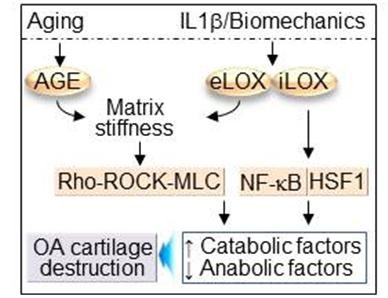Media Center
A multimedia mosaic of moments at GIST
GIST Excellence
Investigation into pathological mechanisms of osteoarthritis due to aging and injury
- 엘리스 리
- REG_DATE : 2015.07.17
- HIT : 657
Investigation into pathological mechanisms
of osteoarthritis due to aging and injury
of osteoarthritis due to aging and injury


Professor Jang-soo Chun and a proposed model of matrix stiffness-mediated mechanotransduction in osteoarthritis development
GIST School of Life Sciences Professor Jang-soo Chun has found the cause of osteoarthritis. Despite the increase of onset due to an aging population, there has been no fundamental treatment other than surgery or pain relief therapy. His study investigating the molecular mechanisms of cartilage degeneration is expected to provide a clue for the prevention and treatment of osteoarthritis in the future.
The research was conducted with the support from GIST’s Silver Health Biotechnology Development Project, and the research has been published in the July 13, 2015, online publication of the ‘Proceedings of the National Academy of Sciences of the United States of America’.
Osteoarthritic cartilage destruction is caused primarily by an imbalance between chondrocyte catabolism and anabolism. Various proinflammatory cytokines that disrupt this metabolic balance during osteoarthritis pathogenesis have been identified. Here, in addition to these biochemical pathways, two major osteoarthritis risk factors, aging and mechanical stress, cause matrix stiffening via nonenzymatic and enzymatic collagen cross-linking through the accumulation of advanced glycation end-products and the upregulation of lysyl oxidase, respectively. Data from the current study illustrate the dynamic nature of physical remodeling of cartilage ECM and elucidate the key mechanotransduction pathway regulating chondrocyte metabolism and osteoarthritic cartilage destruction.
Unexpectedly, researchers identified a nuclear-localized fraction of cellular lysyl oxidase along with its transcription factor targets. These findings support the notion that modulation of the matrix stiffening-mediated mechanotransduction presents an effective therapeutic approach for osteoarthritis.